Rohingya refugees describe how they survived two months drifting in the ocean
On April 14, a wooden vessel crammed with Rohingyas reached the Teknaf jetty. Those Rohingyas, all of whom were residents of different refugee camps in Cox's Bazar, tried to go to Malaysia in search of livelihood
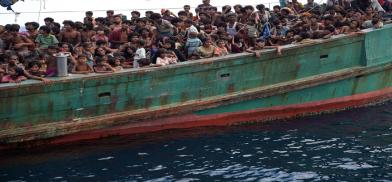
On April 14, a wooden vessel crammed with Rohingyas reached the Teknaf jetty. Those Rohingyas, all of whom were residents of different refugee camps in Cox's Bazar, tried to go to Malaysia in search of livelihood. Failing to reach the Malaysian coast, they drifted in the ocean for two months.
They ran out of food and freshwater. Diseases broke out and about 50 Rohingyas died on the voyage. Finally, after two months, when Bangladesh coast guard rescued them, they found 396 severely starved, emaciated and nearly lifeless Rohingyas in the vessel.
The Daily Star learnt this from two of the survivors -- Md Yasin and Md Jubair. The two also gave a shocking description of the perilous journey, which seems something straight out of a movie.
Yasin, 25, and Jubair, 22, are two brothers living in the Kutupalong refugee camp. They came to Cox's Bazar in their early childhood with their parents and other relatives in the early 1990s.
"We are a large family of seven siblings, my parents and other relatives. It is difficult for us to maintain such an extended family just with relief materials. There are thousands of Rohingya youths like us who want to work but do not find any work opportunities in the camps," said Yasin.
For this reason, Md Mohsin, one of their brothers, went to Indonesia by boat from Teknaf several years ago. And, according to them, Mohsin finally managed to go to the USA from Indonesia and he is now living a good life there.
Such a "success" in the family inspired Yasin and Jubair to look for ways to reach one of those Southeast Asian countries.
Yasin's sudden loss of job also triggered him to take the risk. "I used to work for an NGO where I could get Tk 4,200 per month. But at the beginning of this year, I lost the job as the NGO's project had ended. I became a bit desperate to find another means of income," he said.
So, these two brothers were easy pickings for Syed Ahmed, a local trafficker, who was looking for "potential candidates" for a voyage from Teknaf to Malaysia.
Syed, who is now on the run, managed to convince the two brothers that they will get jobs as soon as they reach the Malaysian coast.
"I was apprehensive in the beginning," said Jubair. "We know people who could not reach Malaysia and were turned back. We heard about their hardship during the voyage. However, we were assured by Syed Ahmed that this time, a large ship has been procured for us and the ship has been stocked up with a month's provision, whereas it takes around only seven days to reach Malaysia."
In fact, the trafficker had charged extra fare for a better and larger ship and better amenities. Previously, it would cost around Tk 10 to 12 thousand per person to reach Malaysia. But Syed took Tk 30,000 to Tk 60,000 from each person for the illegal voyage this time, he said.
"We paid him Tk 30,000 per person. But from other passengers, we learned that many of them even paid Tk 40,000 to Tk 60,000," Yasin said.
On the second week of February, the local trafficker and his agents took Yasin, Jubair and 12 other Rohingyas, two of whom were women, to the Teknaf jetty. They boarded a sampan boat which took them to the deep sea, where a large wooden vessel was waiting for them.
"It was not a ship. It resembled a large fishing trawler. It was for carrying goods, not humans," Jubair recalled.
With passengers on board, the vessel started its engine but not for Malaysia. Instead, it started to move around the Bangladeshi coast to take more Rohingyas, who also wanted to go to Malaysia.
"In this way, around 500 people got on to the vessel that was spacious enough to take only around 100 people. All the men were gathered at the lower deck while women were taken to the upper deck. The lower deck was so crammed that we could not even stretch our legs," Yasin said.
After taking passengers for seven days, the vessel finally started for Malaysia.
THE PROMISED LAND TOO FAR
From the very beginning of the voyage, Jubair and Yasin started to realise that they have been tricked. For the first seven days, they were given only three plates of rice and a small quantity of lentil every day. They were allowed to drink only three mugs of fresh water a day.
Heat, suffocation and exhaustion made many Rohingyas severely ill within the first few days of the voyage.
"We were pushed to the limit of our endurance. But we tolerated the suffering only because we hoped that if we could reach Malaysia, all of our sufferings would end," said Jubair.
However, when they reached near the Malaysian coast, they were informed by the vessel's crew members that a disease named novel coronavirus had spread in Malaysia and that Malaysian navy has doubled their patrol to drive back any Rohingya boat in fear of further spread of the virus.
"It was the first time we heard about coronavirus. Till that time, we could not realise the gravity of the situation. We were told that the vessel would wait near the coast of Thailand and when the disease would go, they would make another attempt to take us ashore," Yasin said.
The vessel was moving to and fro near the coast of Thailand for several weeks to avoid arrest by Malaysian and Thai navy. Meanwhile, the vessel's already dwindling supply was almost finished.
"We were told that the vessel was supplied with one month's provision but it was only enough for around 100-200 people. Again, the vessel delayed at least a week in Bangladesh to take passengers. As a result, when we were near to the Malaysian coast we were given only one plate of plane rice and a mug of water every 24 hours. And, when we were waiting near the Thai coast, we were literally starving," he recounted.
People started to become ill due to thirst and starvation. "We used to soak our shirts with sea water and tried to drink it. It was terrible but we had no other choice," said Jubair.
Then one day, when they made another attempt to reach the Malaysian coast, they were caught by the Malaysian Navy. They vehemently refused any entry and threatened the crew, saying they would seize the boat and arrest them.
Seeing that it would be impossible to reach Malaysia, the Rohingya refugees started to panic. In desperation, many of them were thinking of attacking the Myanmar crew.
"We were panicked because we thought those Burmese people would starve us to death. They were eating regularly but they were not giving us any food. So we had no alternative to attacking them and seizing their food," said Jubair.
Sensing unrest among the refugees, one day, the vessel's captain said to them, "If you kill us, you will not be able to return. You will die in the sea. But if you maintain order, we will manage provisions from Cambodia and take you back to Bangladesh."
THE RETURN JOURNEY
Next day, a Cambodian fishing trawler provided some supplies and the vessel started the return journey. After several days, when the vessel reached the Myanmar coast, its crew members started to act suspicious.
"They were moving around the Myanmar coastline. By then, the supplies had finished. We learned that the captain was fearing arrest by the Bangladesh coast guard, so he was thinking of leaving the vessel or taking us to Myanmar," said Yasin.
The Rohingya refugees, many of whom escaped genocide at the hands of the Myanmar army a few years earlier, became extremely frightened.
One day, while the vessel was anchored in the deep sea, a Myanmar Navy warship arrived and the Myanmar seamen boarded the vessel. They flogged the vessel's crew and threatened to shoot all the refugees.
"Then, some of the sailors of our vessel seized all our possessions like money, mobile phones and some ornaments which we were taking with us to restart our lives in Malaysia. They bribed the Myanmar navy officers with our belongings and managed to flee from the Myanmar territory," Yasin recounted.
"Meanwhile, one of our fellow passengers, who was already very sick, died at night after vomiting. He probably could not tolerate the foul sea water we had to drink. One of us, who knew the verses of the Quran, led the funeral prayers and threw the body in the sea," narrated Yasin.
However, from that night, death following vomiting and loose motion became a common occurrence in the vessel. Every day and night one or two passengers succumbed to their illness.
According to Yasin, seeing them very weak and dying one after the other, one of the vessel's crew members tried to grab one of the women aboard to molest her.
That sparked outrage in the vessel. Some of the refugees, who were strong enough, caught the crew member and killed him instantly. The rest of the crew members became frightened and sailed the vessel towards the Bangladesh coastline.
TRAGEDY NEAR BANGLADESHI COAST
When the vessel was near Bangladeshi waters, the captain again told the refugees that they were waiting for sampans to ferry them to the coast. Because, if he took this vessel to the coast, he would be arrested and the vessel would be seized.
"We waited for week after week but there was no sign of any sampan, while our people were dying. Some of us saved our lives by storing and drinking rain water," said Jubair.
For many youths like Jubair, waiting so close to home was too much to bear. Tying himself to a barrel, Jubair jumped into the sea.
"I was too weak to swim. I hoped that I would be drifted ashore or rescued by a fishing boat. Even if I was arrested, at least I would be able to eat and drink something," he said.
Following Jubair, many other refugees jumped into the sea. While Jubair was rescued and taken back to the vessel by his brother Yasin, most of the Rohingya refugees who jumped off never returned.
According to them, at least 50 refugees died during the voyage due to illness, starvation or by jumping into the sea.
Then, one day, a fishing trawler approached the drifting vessel and provided the Rohingyas with some rice, fuel and water. However, the captain and most of the crew boarded the trawler leaving only two crew members to take the vessel to Teknaf.
While sailing towards Teknaf, the vessel and its unfortunate passengers were rescued by the Bangladesh Coast Guard.
RESCUE AND RETURN
According to Bangladesh Coast Guard, on April 15 around 9:00pm, the vessel carrying the refugees was rescued. At that time, there were 396 people on board (150 men, 182 women and 64 children). Lieutenant Hayat Ibna Siddiqui of Bangladesh Coast Guard said, "With support from local police and Bangladesh Border Guard, we rescued the Rohingya refugees, the Myanmar citizens. They were sick and extremely malnourished. We provided them with food and primary medical care and then turned them over to UNHCR."
Mostafa Mohammad Sazzad Hossain, assistant communication/public information officer, UNHCR, said in a statement, "At the request of the Government of Bangladesh, UNHCR, the UN Refugee Agency, and partners in Bangladesh provided shelter and assistance to close to 400 Rohingya refugees who disembarked from a boat in the Bay of Bengal.
"In line with established procedures and in adherence with government directives for all individuals entering Bangladesh, they received a full medical screening and were monitored and quarantined for two weeks. They have all completed the required quarantine period and have returned to their families within the camps. All began their journey at sea from Bangladesh, where they have been living for some time. None had shown any symptoms of Covid-19 infection," said the statement.
"When we returned to the refugee camp, many of us found that our houses have been occupied by other people. But we are all extremely happy. We got a new life. We want to thank Bangladesh Coast Guard and UNHCR because without their support, we wouldn't be here today," Yasin said.
https://www.thedailystar.net/frontpage/news/tricked-deathtrap-1917461


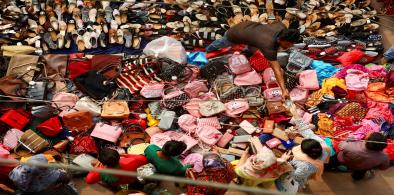
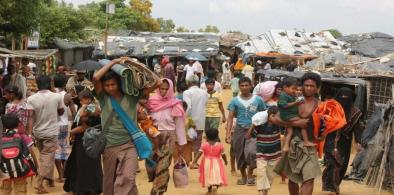
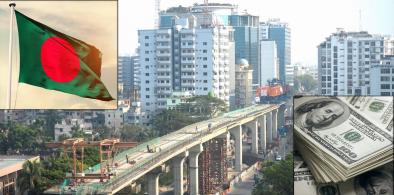
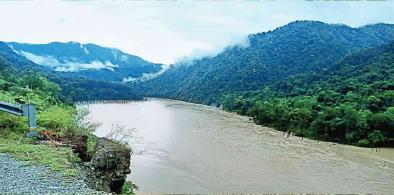

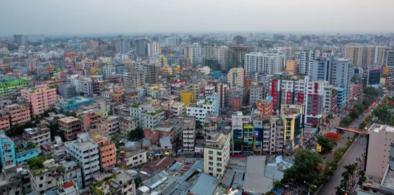








Post a Comment